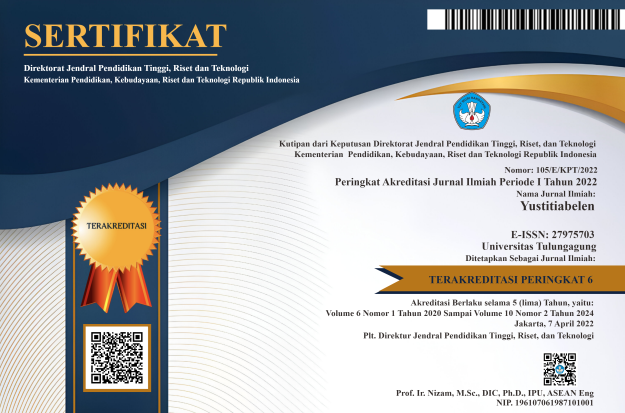The Role Of Organizational Culture to EmployeePerformance Improvement In Higher Institutions
Case Study : The University Of Pawyatan Daha
DOI:
https://doi.org/10.36563/publiciana.v16i01.692Keywords:
Organizational Culture, Employee PerformanceAbstract
Organizational Culture in Educational Institutions is the joint development of all members of the organization in an educational institution related to values, norms, beliefs, traditions beliefs, and ways of thinking that they adhere to and appear in their behavior. Therefore, building a strong organizational culture is an important agenda for educational institutions.. The focus of this research is to find out how organizational culture is in the Pawyatan Daha University environment and to find out the factors that affect employee performance. This research uses a descriptive case study approach. The results of the study show that the organizational culture in the Pawyatan University environment is low for the formal system, namely the employee's response to all rules/policies that have been set, while for the informal system it is good enough to cover communication and collaboration. And also from the external environmental system it has also been quite good by re-joining the Pawyatan Daha Central Foundation which previously used campus autonomy in administering higher education. While there are 3 factors that affect performance, namely: individuals including educational background and age, psychological including low motivation and creativity, the last is the organization, namely the presence of multiple positions for several employees and the uneven distribution of tasks and poor leadership
Downloads
References
Suwarto, F.X., Koeshartono, D., 2009, Budaya Organisasi: Kajian Konsep dan Implementasi, Penerbit Universitas Atma Jaya Yogyakarta, Yogyakarta.
Ndraha, Taliziduhu, 1999, Pengantar Teori Pengembangan sumber Daya Manusia, Jakarta: PT Rineka Cipta.
Robbins Stephen P, 2007, Perilaku Organisasi, Jilid 1 & 2, Alih Bahasa :Hadyana Pujaatmaka, Indeks Kelompok Gramedia, Jakarta
Baron & Greenberg. 1997. Behavior in Organization Understanding and Managing The Human Side of Work . 6th edition. USA: Prentice Hall
Gomez-Mejia, Luis R and David B. Balkin and Robert L. Cardy. (2012). Managing Human Resources.New Jersey: Pearson Education inc Publishing as Prentice Hall
Robbins Stephen P, 2007, Perilaku Organisasi, Jilid 1 & 2, Alih Bahasa :Hadyana Pujaatmaka, Indeks Kelompok Gramedia, Jakarta.
Yin, Robert K, Case Study Research Design dan Method, COSMOS Corporation, 1989. Sugiyono. (2012). Memahami Penelitian Kualitatif”. Bandung : ALFABETA
Downloads
Published
Issue
Section
License
1. Hak cipta atas artikel apa pun dipegang oleh penulisnya.
2. Penulis memberikan jurnal, hak publikasi pertama dengan karya yang dilisensikan secara bersamaan di bawah Lisensi Atribusi Creative Commons yang memungkinkan orang lain untuk membagikan karya dengan pengakuan atas kepenulisan dan publikasi awal karya tersebut dalam jurnal ini.
3. Penulis dapat membuat pengaturan kontrak tambahan yang terpisah untuk distribusi non-eksklusif dari versi jurnal yang diterbitkan dari karya tersebut (misalnya, mempostingnya ke repositori institusional atau menerbitkannya dalam sebuah buku), dengan pengakuan dari publikasi awalnya di jurnal ini.
4. Penulis diizinkan dan didorong untuk memposting karya mereka secara online (misalnya, di repositori institusional atau di situs web mereka) sebelum dan selama proses pengiriman, karena hal itu dapat mengarah pada pertukaran yang produktif, serta kutipan yang lebih awal dan lebih besar dari karya yang diterbitkan.
5. Artikel dan materi terkait yang diterbitkan didistribusikan di bawah Lisensi Internasional Creative Commons Attribution-ShareAlike 4.0














